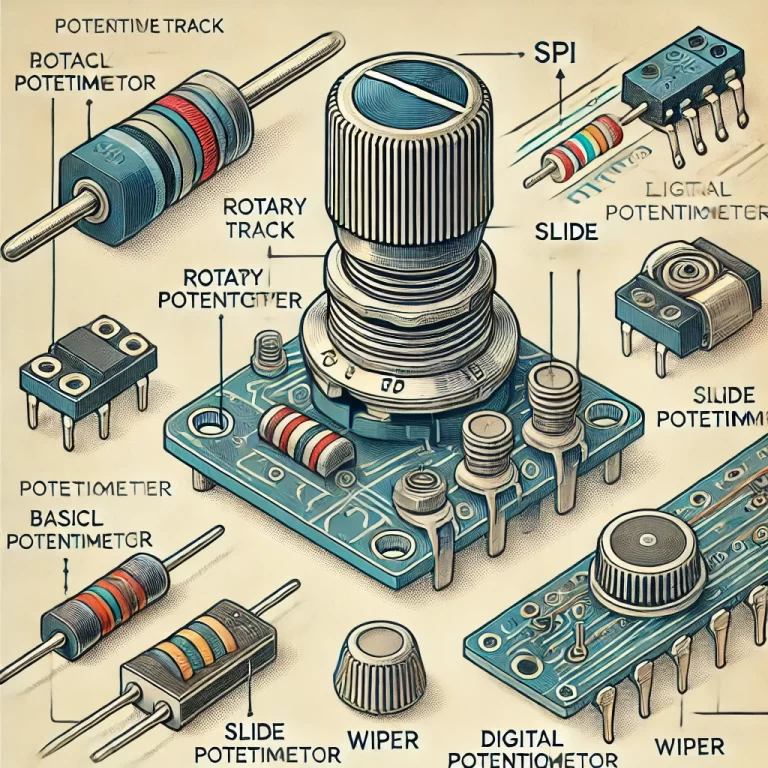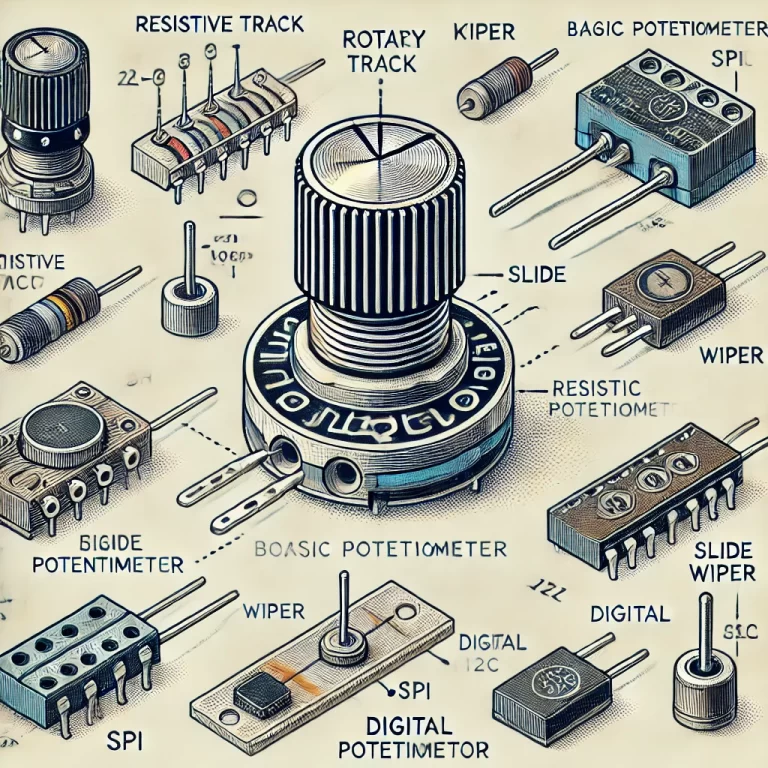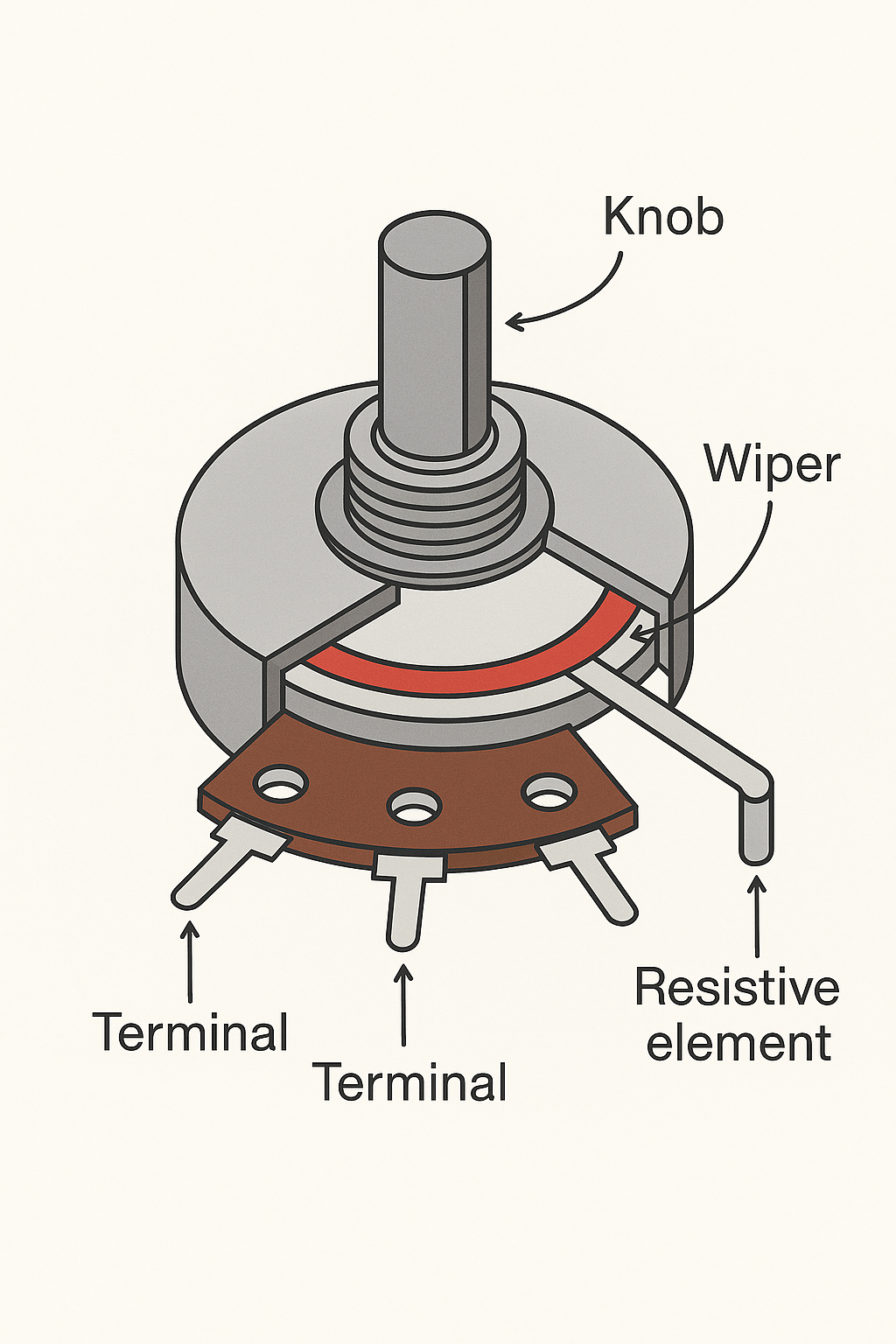A potentiometer, often abbreviated as “pot”, is a type of variable resistor widely used in electronic and electrical circuits to adjust voltage or signal levels. It consists of a resistive element and a sliding or rotating contact (wiper) that taps the resistance to provide a variable output voltage.
1. Working Principle of a Potentiometer
A potentiometer typically has three terminals:
Two terminals are connected to the ends of the resistive track.
One terminal is connected to the wiper, which moves along the resistive track.
When a voltage is applied across the two end terminals, the wiper acts as a voltage divider by picking off a portion of the voltage according to its position. This makes potentiometers ideal for adjustable control of electrical devices.


2. Main Types of Potentiometers
Potentiometers can be classified based on mechanical construction, taper characteristics, and application scenarios.
2.1 By Control Mechanism
| Type | Description | Example Use |
|---|---|---|
| Rotary Potentiometer | Adjusted by rotating a knob or shaft. The most common type. | Volume control on audio equipment |
| Slide Potentiometer | Also called a slider. Adjusted by linear motion. | Audio mixing consoles |
| Digital Potentiometer | Controlled electronically via SPI or I²C interfaces. | Automated calibration circuits, MCU-controlled systems |
2.2 By Taper (Resistance Curve)
| Taper Type | Characteristics | Label |
|---|---|---|
| Linear Taper | Resistance changes uniformly with knob position. | B10k, B100k, etc. |
| Logarithmic (Audio) Taper | Resistance changes in a logarithmic curve. Matches human hearing sensitivity. | A10k, A100k, etc. |
2.3 By Structure
| Type | Description |
|---|---|
| Single-turn Potentiometer | Standard type; full range covered in a single turn. |
| Multi-turn Potentiometer | Requires several turns for full-scale adjustment. Offers higher precision. |
| Panel-Mount Potentiometer | Designed for installation on control panels with knobs. |
| Trimmer Potentiometer | Small-sized, used for occasional fine-tuning on PCBs. Not meant for frequent use. |
| Potentiometer with Switch | Integrated on/off switch activated at one end of rotation. Useful in household appliances. |

3. Common Applications
Potentiometers are widely used in both analog and digital systems for the following purposes:
| Application | Function |
|---|---|
| 🎧 Audio Equipment | Volume, tone, and balance control |
| 💡 Lighting Systems | Dimming control |
| 🛠️ Calibration Equipment | Precision adjustment of voltage or resistance |
| 🖥️ User Interfaces | Joysticks, control knobs in machinery |
| 🔬 Laboratory Instruments | Setting reference voltage or gain |
| 🤖 Embedded Systems | Controlled via microcontrollers for dynamic adjustments |
4. Advantages and Limitations
✅ Advantages
Simple and cost-effective
Easy manual operation
Versatile (can act as variable resistor or voltage divider)
❌ Limitations
Subject to mechanical wear over time
Not suitable for high-power applications
Limited precision in standard models

5. Selection Tips
When selecting a potentiometer, consider the following:
Resistance value (e.g., 1kΩ, 10kΩ, 100kΩ)
Power rating
Mechanical size and shape
Taper type (Linear or Logarithmic)
Application environment (temperature, humidity, frequency of adjustment)
📌 Conclusion
Potentiometers are fundamental components in electronics, used for adjusting signal levels, calibrating equipment, and providing user control. With a variety of types—rotary, slider, digital, single-turn, and multi-turn—they remain vital in both legacy analog systems and modern digital interfaces. Understanding their types and specifications ensures effective application in design and maintenance tasks.
